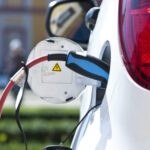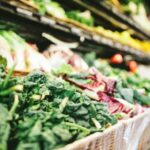Environmental scorecards for your clothing, shoes, and household fabrics have arrived, kicking off a trend that is sure to grow. The scorecards use the Higg Index Sustainability Profile, a product value chain methodology developed by the Sustainable Apparel Coalition. As scorecards grow in scope and popularity, customers will be able to easily compare products through standardized, apple-to-apple comparisons.
The Higg methodology measures the life cycle environmental impacts of a product from the point of resource extraction to manufacturing impacts, all the way through product durability, care, and end of use.
The Higg application gives designers a holistic perspective of a product to better understand the tradeoffs that need to be considered and help them focus on high-impact areas for improvement. For example, it calculates the product’s carbon footprint, the impacts of the water consumed in making a product, fossil fuel use, and nutrient pollution. Using the methodology, one can compare, for instance, the environmental impacts of conventional, recycled, or organic cotton.
Currently, much of the data used is self-reported, but a growing number of companies using Higg also use verified data. In addition, the methodology is publicly available for transparency.
Companies using the Higg data to make internal decisions about product development may choose to make this data public via scorecards. H&M and Norrona were among the first to embed the profiles in their e-commerce platform in the U.S and Europe, with plans to scale up over time. Currently, the report card data is a bit sparse. For example, many products include descriptions of the work they have in the process to improve performance. But this transparency puts the power in the hands of customers, which drives competition and innovation.
The Sustainable Apparel Consortium (SAC) is a global, multi-stakeholder non-profit alliance for the fashion industry. It developed Higg through a cooperative industry effort that began with a lofty goal and an unlikely partnership between Patagonia and Walmart in 2009.








